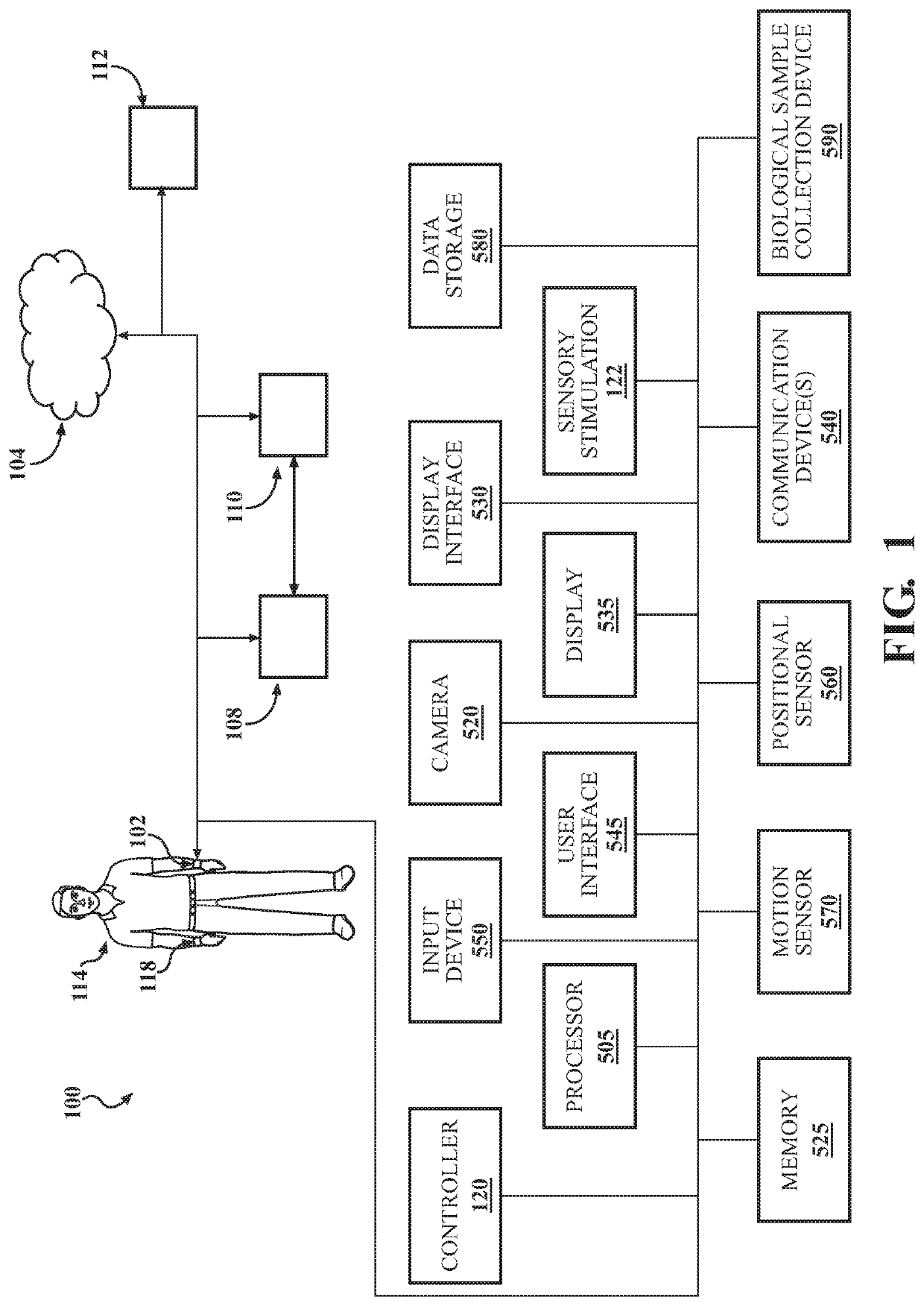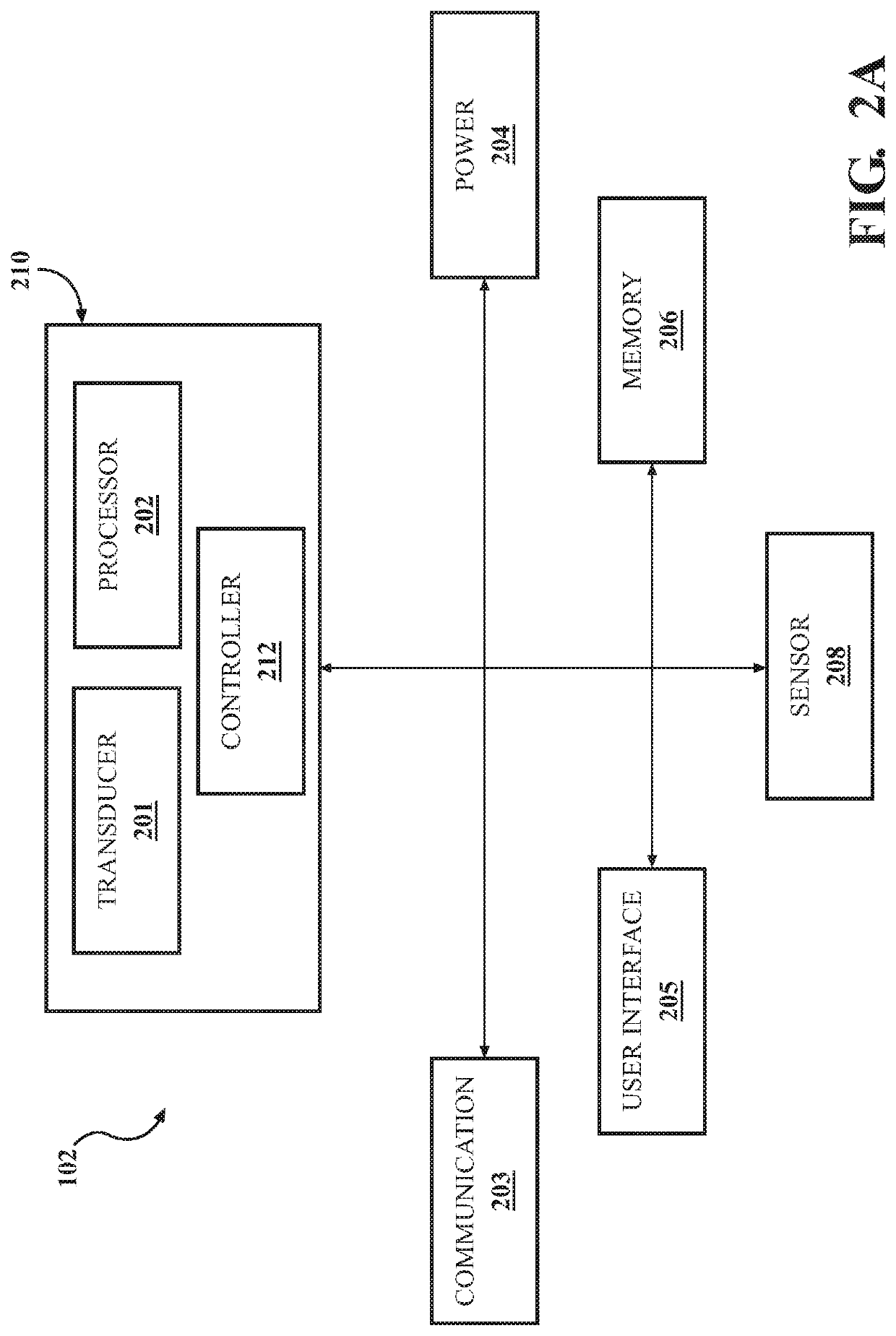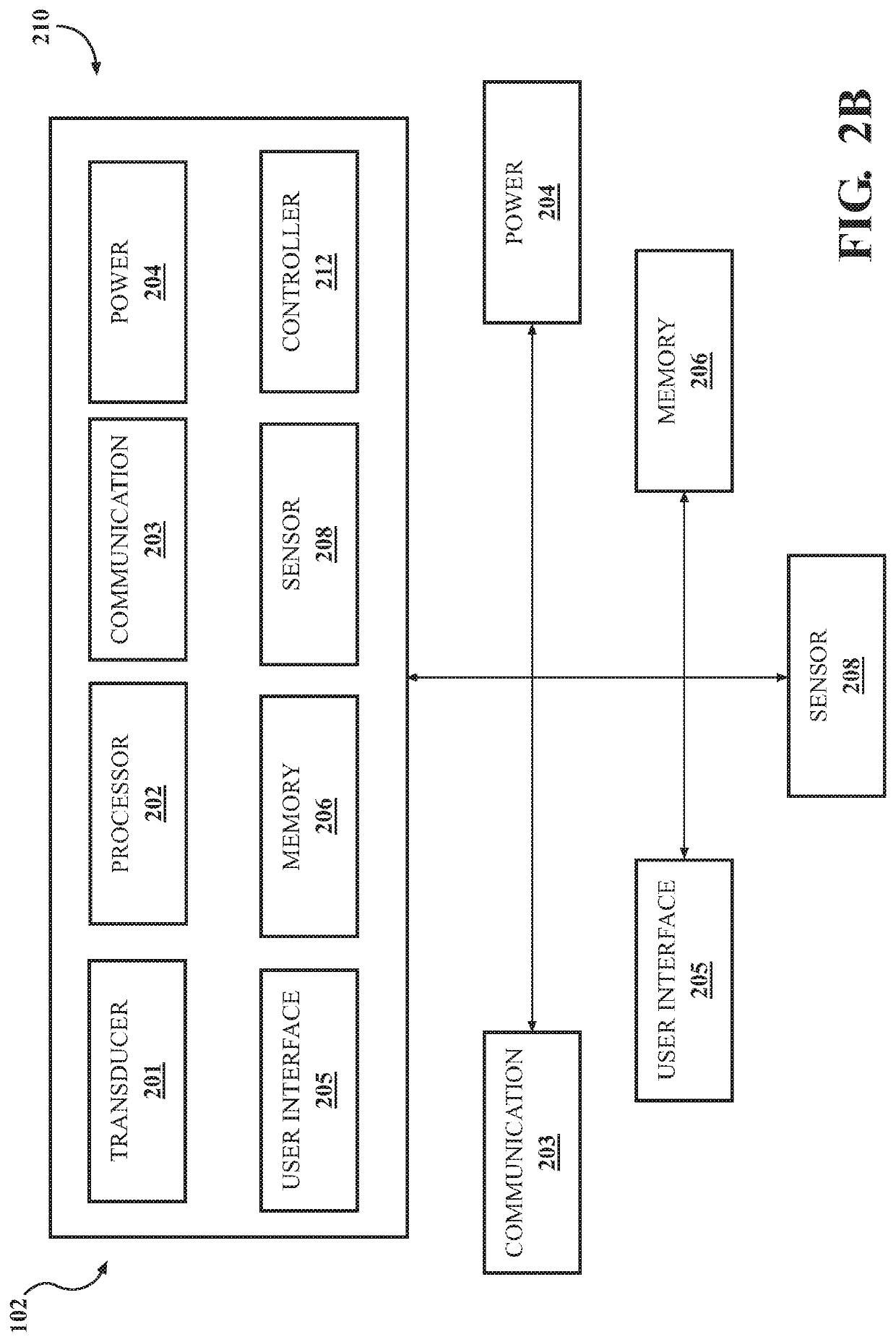Systems and methods of wave generation for transcutaneous vibration
a technology of wave generation and transcutaneous vibration, applied in the field of systems and methods of wave generation for transcutaneous vibration, can solve the problems of discontinuation of stimulation, second transcutaneous vibratory output generation, and second transcutaneous vibratory output generation, and achieve the effect of avoiding habituation
- Summary
- Abstract
- Description
- Claims
- Application Information
AI Technical Summary
Benefits of technology
Problems solved by technology
Method used
Image
Examples
Embodiment Construction
[0053]An apparatus with transducers may deliver stimulation and / or treatment to a portion of a subject, such as in response to an input, that is intended to allow the subject to achieve a target state, such as a neural state. Such “stimulation” will be described herein more fully. However, the stimulation shall be briefly referred to here as transcutaneous vibratory stimulation. However, individuals reside in ecosystems with many inputs, devices, and sources of stress such that achieving and maintaining any one state, recovering from states, or being resilient to certain states, such as stress, may be difficult. This apparatuses, methods and systems described herein provide solutions to certain problems, such as how to: mitigate the negative effects of co-treatment with a stimulation protocol, predict a particular neural state onset and treat proactively with particular waveforms, utilize data external to the apparatus to determine a subject's state and / or achievement of a target st...
PUM
 Login to View More
Login to View More Abstract
Description
Claims
Application Information
 Login to View More
Login to View More - R&D
- Intellectual Property
- Life Sciences
- Materials
- Tech Scout
- Unparalleled Data Quality
- Higher Quality Content
- 60% Fewer Hallucinations
Browse by: Latest US Patents, China's latest patents, Technical Efficacy Thesaurus, Application Domain, Technology Topic, Popular Technical Reports.
© 2025 PatSnap. All rights reserved.Legal|Privacy policy|Modern Slavery Act Transparency Statement|Sitemap|About US| Contact US: help@patsnap.com



